Dealing with muddy chicken runs. With 16 solutions.
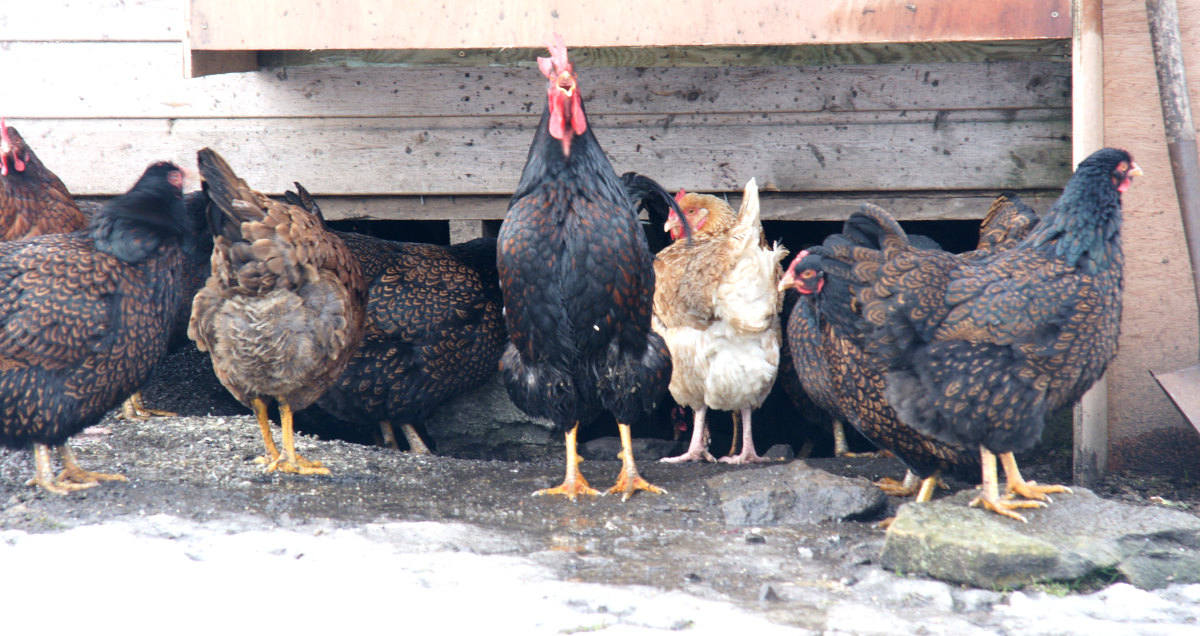
Wherever chickens stand around it leads to the soil becoming compacted very quickly and a thin crust forms on the soil making the water sit on the surface.
Table of Contents
How do you manage the mud that inevitably appears in the chicken run?
You can deal with it by covering the mess up, diverting the water away, covering the run or moving them around every few days or free ranging your birds.
The problem here is that chickens will quickly reduce even the greenest lush grass to ground level and damage the roots in a few days, especially if confined in a small area like they would be in a run.
I live in North Yorkshire and we get a lot of rain and snow and managing the mud in chicken runs is something I have had a lot of practice doing.
Below: I sow wheat into the mud in the run, it sprouts a thick long lasting green carpet that helps keep the mud down.
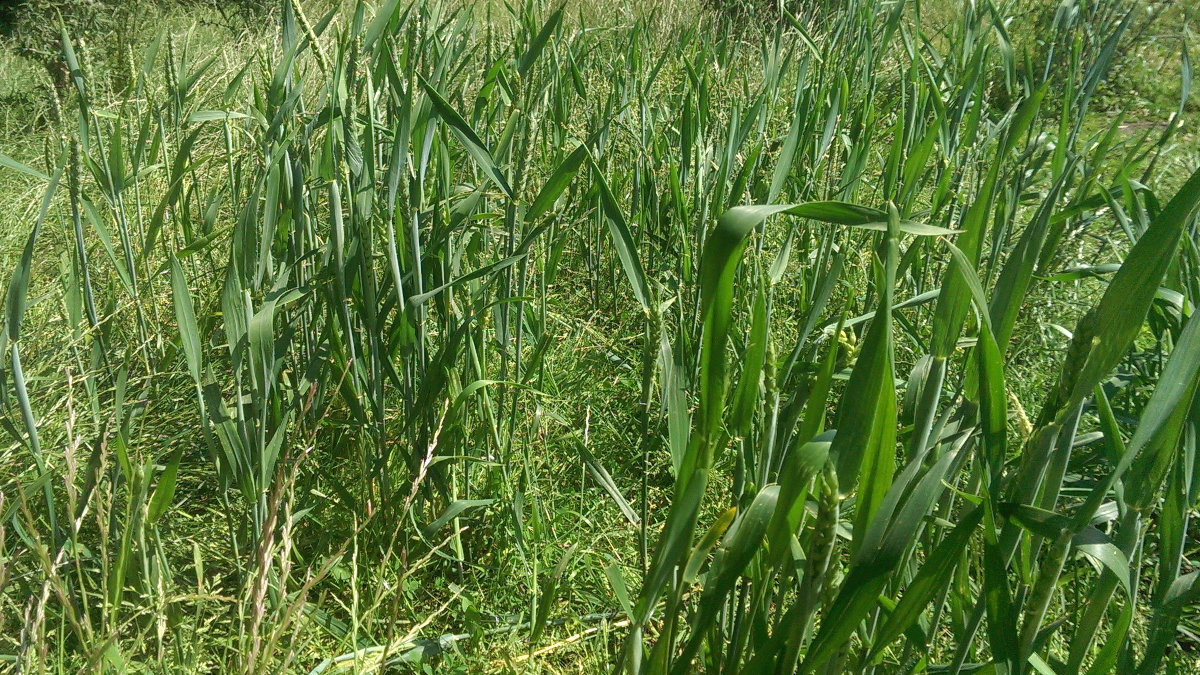
Mud is a problem I have as well, every Autumn (Fall) and Spring when the weather is usually the wettest but the sun is quite weak.
This is a problem that never seems to go away especially in places like the United Kingdom and the wetter parts of the world or in the winter months when the sun is at it's weakest.
Then when it dries out again it gets rock hard and remains a bald patch forever.
Is mud bad for chickens?
In a word yes, Mud is bad for chickens.
- They get infections and bumble foot much more easily.
- They have muddy feet which dirties the eggs.
- Its unsightly and smelly.
- It's not the safest for the keeper. I recently spent 6 weeks with my foot in a pot after I broke a bone slipping in the mud.
- Viruses like bird flu survive for much longer periods of time in damp environments.
And you wouldn't choose to stand around in a swamp all day. They need somewhere to scratch and mud is far from ideal for this. Bored hens get destructive.
Wherever chickens stand around it leads to the soil becoming compacted very quickly and a thin crust forms on the soil making the water sit on the surface.
As a chicken owner you should prefer it if your birds have clean feet. I think chickens would rather clean feet. It dirties eggs and spreads infection and disease. Muddy runs increase the likelihood of Bumblefoot.
Below: Mud causes all sorts of foot problems in chickens.
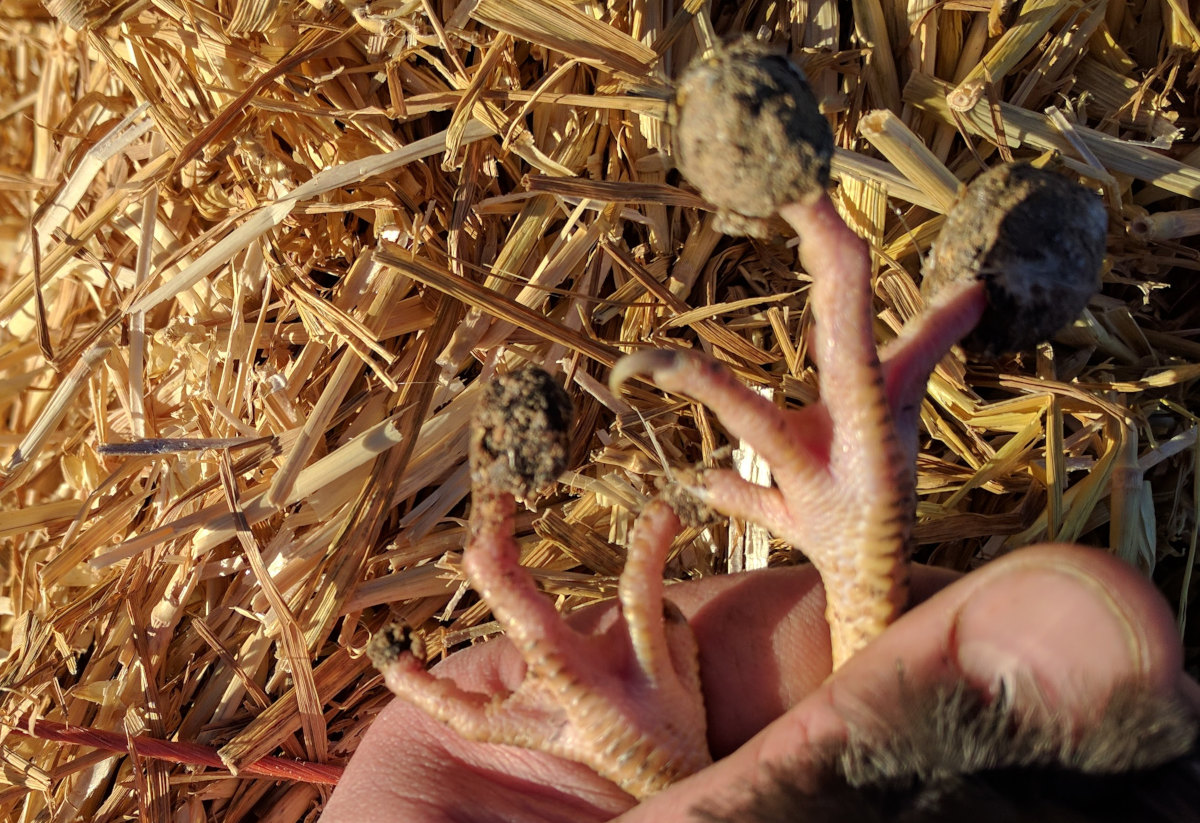
Do not be tempted to use short term measures. Sand, shavings and even gravel have the tendency to disappear into mud quite quickly.
Products like hay, bark and wood chip can grow mould if left damp for any length of time.
You should try to confront it before it becomes a problem.
Words about drainage. This like everything else in the poultry keeping sphere is best tackled before it becomes a problem.
Methods for dealing with mud in chicken runs:
Prevention is key. Choose a location for your chicken run that has good drainage. If possible, build the run on a slope so that water will drain away. You can also add a layer of gravel or sand to the bottom of the run to help with drainage.
Gravel or Sand: Lay down a layer of gravel or sand in the chicken run. These materials provide a firm and dry surface for the chickens to walk on, reducing the amount of mud they encounter. Additionally, gravel and sand facilitate drainage, preventing water from accumulating and turning the area into a muddy mess.
- Make use of plants. Trees provide shelter and grain seeds can be used to quickly cover muddy runs in greenery.
- Elevate the Coop and land: If possible, elevate the chicken coop slightly above the ground. This helps prevent water from seeping into the coop during heavy rains and further reduces the chances of mud forming in and around the coop area.
- You can make a run with a raised mesh floor. This allows the grass to grow up through the mesh and prevents the hens feet making contact with the ground.
The gap from the ground should be at least 6 inches, any less and you may struggle to deal with rodents that choose to make a home under your run.
Care must be taken with the choice of floor mesh, to big and the feet will pop through and too small means the dropping will build up on the mesh. It should also be sturdy to keep predators out. - Provide Adequate Drainage: Ensure that the chicken run has proper drainage. If the area is prone to waterlogging, consider adding drainage channels or trenches to redirect water away from the run.
- Add a roost. Providing your chickens with a roost will give them a place to perch and stay out of the mud. You can buy a commercial roost or make your own.
- Add Straw or Hay: Spread straw or hay over muddy areas. These materials can absorb excess moisture and create a drier surface for the chickens to walk on. Make sure to replace the straw or hay regularly to maintain cleanliness.
- Use Wood Chips or Shavings: Wood chips or shavings are another excellent option for keeping mud at bay. They provide good traction and absorb moisture effectively, creating a more comfortable environment for the chickens.
- Rotate the Run: If you have a movable chicken run, consider rotating it to different areas periodically. This prevents excessive wear and tear on the ground, allowing the previously used areas to recover and dry out.
- Maintain Good Hygiene: Regularly clean the chicken run to remove any mud buildup. Rake and remove wet or soiled bedding and replace it with fresh materials.
- Covered Shelter: If your chicken run doesn't have any overhead covering, consider adding one. A roof or tarp over the run can help protect the area from rain, minimising mud formation.
- Limit Access: If the weather conditions are particularly bad and the run is extremely muddy, consider limiting the chickens' access to that area. Keep them confined to a drier location until the muddy area has a chance to dry out.
- Avoid using clay-based soils. Clay soils are very heavy and tend to hold moisture, which can lead to mud. If you have clay soil, you may need to add sand or other materials to help with drainage.
- Don't overcrowd the run. The more chickens you have, the more mud you're likely to have. Overcrowding can also lead to other problems, such as aggression and disease.
- Keep an eye on the weather. If you're expecting rain, you may need to take extra steps to prevent mud, such as covering the run or adding more absorbent materials.
- Don't allow water to sit on the surface. Use a spike to drive deep holes into the ground to improve drainage.
Surface coverings like gravel tend to be better than compostable ones and the gravel does not grow mould.
Below: Straw used to cover a muddy chicken run. You need several inches to be effective.

Build you run on several inches to two feet of compacted builders rubble and then cover with sand or gravel. This will ensure water runs away into the ground and never becomes a crisis that needs dealing with in the cold and wet with short days in winter.
Alternatively build a raised coop base with planks of wood or cinder/breeze blocks. Make sure they are secure and predator proof and then fill the inside with at least 12 inches of free draining course sand or hardwood chip.
A simple short term measure that works as well is to cover the floor with pallets. This raises it up, gives the ground time to recover. This is also cheap, quick and simple.
It needs to keep rodents out as well as predators.
Build or buy a bigger coop so they can spend more time inside in the warm and dry. let them out only in the afternoon when they have laid there eggs.
How do you clean and sanitise a muddy chicken run?
How do you stop the run from smelling when it is already a muddy mess. Your first effort should be to intercept the water before it causes a problem.
Trying to cover the problem without dealing with the water flow will probably just result in your covering just being washed away.
Lime can be used to sanitise the chicken run. It is caustic however and needs to be use sparingly, a little at a time over the course of a few weeks.
Sunshine is another good steriliser.
Ensure water doesn't run through the coop area or puddle or pool anywhere it can cause an issue. Cover the run in a suitable covering like roofing sheets.
The best way to clean out a muddy run is to first remove the mud with a rake or by digging.
Below: if you just cover mud with hay or straw it can set like concrete when it dries out.
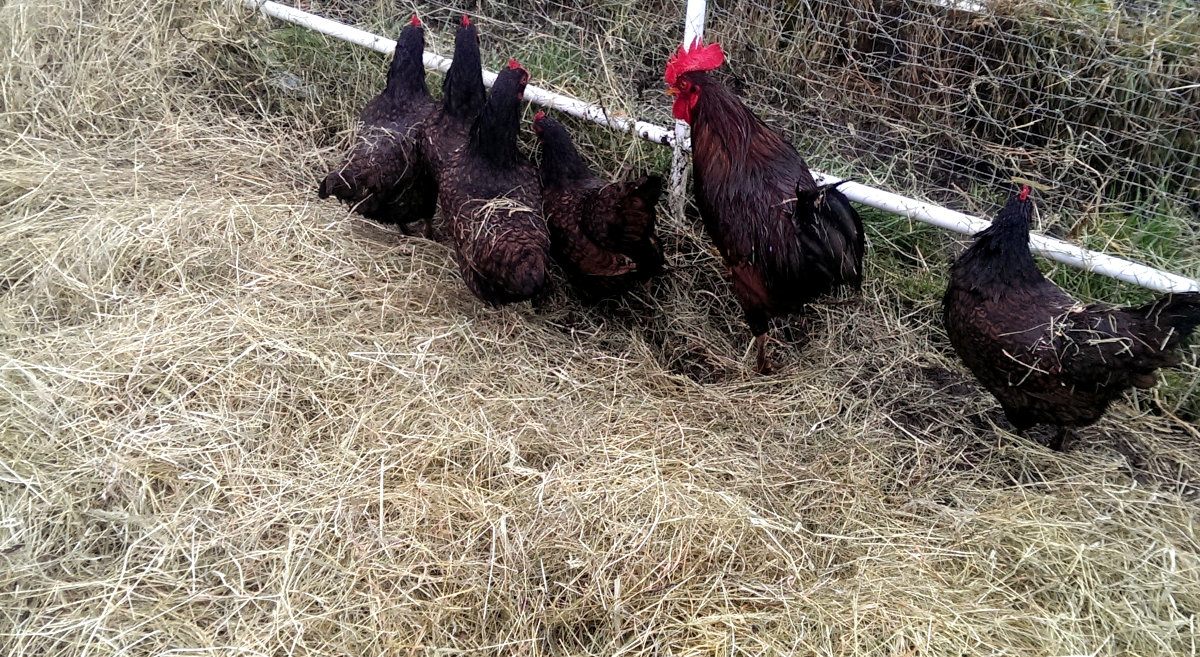
Then fill with gravel or whatever your choice of floor covering is and raise up the surface so it stays above the level of the surrounding ground.
This will not do away with the bare earth that is inevitable from having chicken scratching around but it will ensure it stays dry.
Remember to build your coop on high ground, check the drainage before you start and cover the run to keep the ground dry.
A quick word about snow. if you live where it snows you will know it can blow into the smallest of cracks and make some deep drifts. when it melts you will end up with a muddy quagmire again so prep for snow with a windbreak or channel.
List of other possible solutions for muddy chicken runs:
Use a mobile ark or move the birds around.
Below: A trio of Wyandottes in a movable ark.
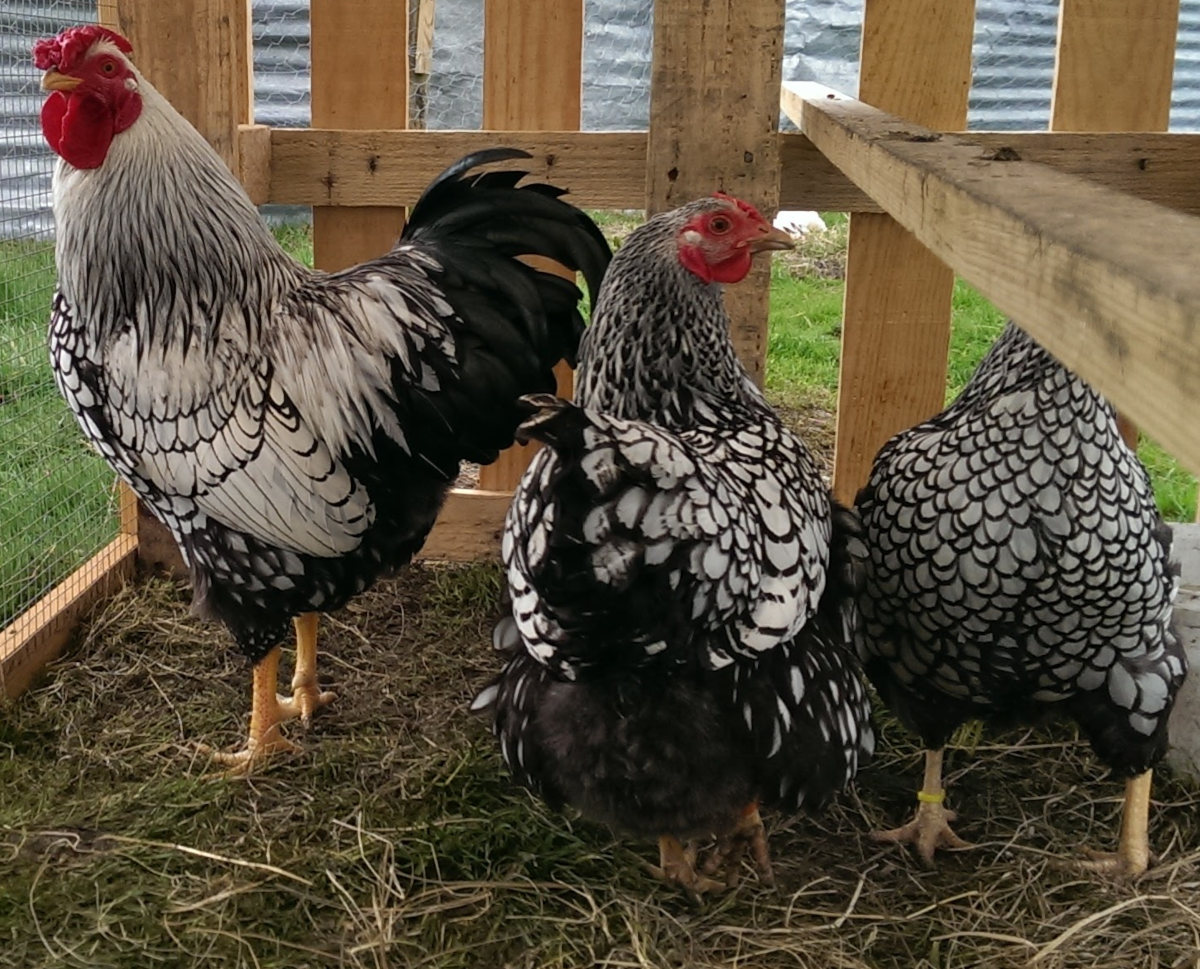
Solid surfaces like concrete, slabs or brick pavings. Make sure to leave drainage gaps between the flags.
Make use of plants. This is not suitable for everyone and every location but I have used it successfully in the past. Buy a sack of wheat or barley or whatever is your grain of choice and sow a thick layer into the mud.
The seed will soak up the water and begin to germinate. As it does so a carpet of fresh green will appear. This technique works when you are able to keep the hens off it until the growth is well underway
Use a raised mesh floor or pallets to keep the hens from scratching in the mud. The pallets can be burned after.
Keeping birds amused for the sake of the run. Birds kept confined should not even be allowed to become bored. Use logs, perches, bales of hay and suspended greens to keep chickens entertained.
Surface coverings like gravel, hay, sand or shavings and other mulches like bark or wood chippings. Bark apparently can grow aspergillosis but I have never seen that happen.
Whatever you choose to make use of, the run will need raised edges to stop the hens scratching the filling out and it will need to be at least 3 inches deep. It will also need a solid base at the entrance / exit to the run.
